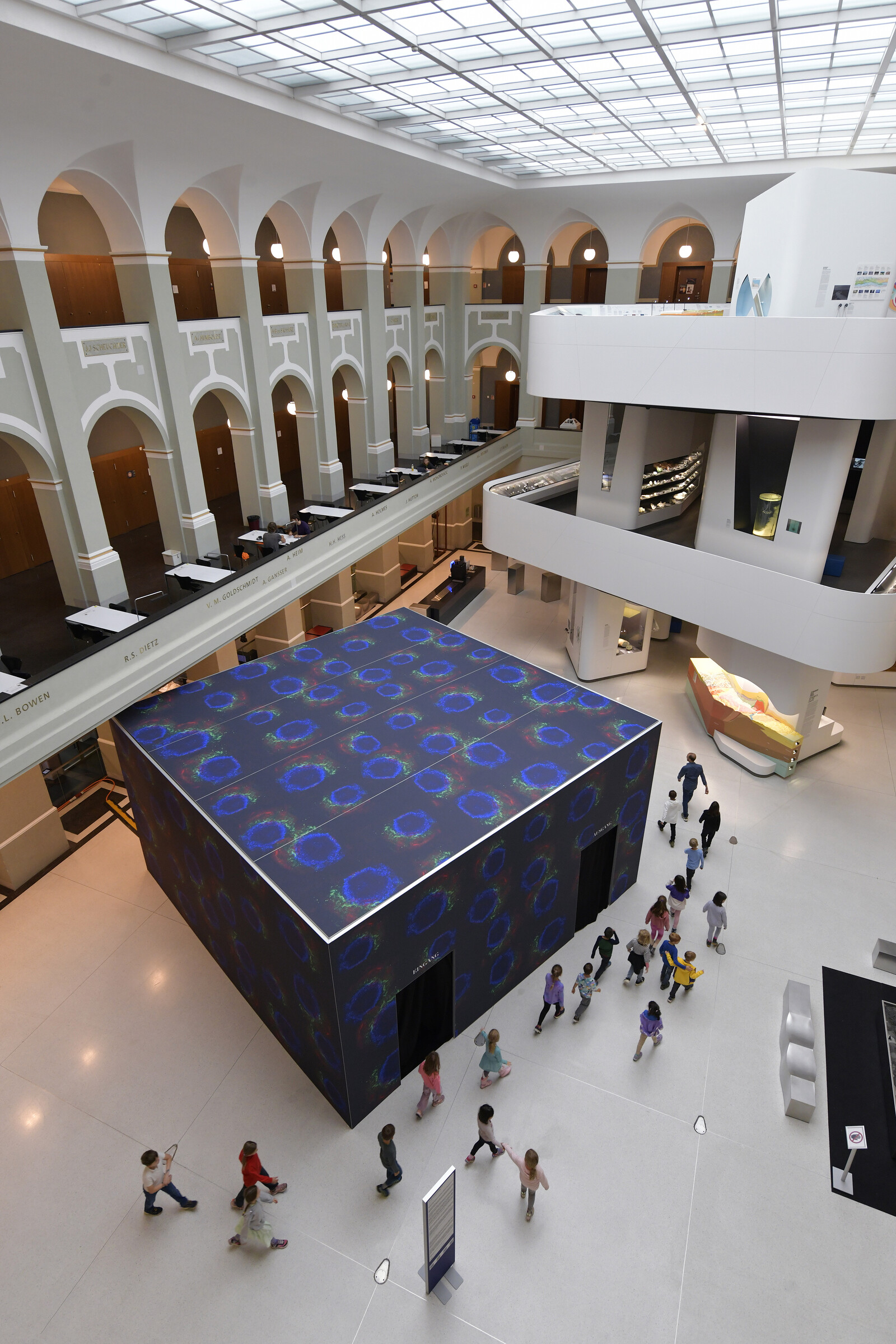The flux under your skin
Using bacteria to fight cancer
September 1–November 29, 2023
Using “bacterial ships” and magnetic fields in tumors
Today, we have advanced in how we use bacteria for cancer therapy and stimulating the immune system. However, despite immense medical progress, the successful delivery of therapeutic bacteria to tumors remains challenging. As a result, only a few bacteria manage to navigate from the bloodstream through dense tissue to finally reach their targeted tumor.
ETH researcher Simone Schürle and her team want to change this by harnessing the power of a magnetic control system to direct special magnetic bacteria (which are like tiny living robots) inside the body. These bacteria serve as drug carriers and are controlled by a magnetic field to help them overcome cell and tissue barriers and direct them to the tumor site. The bacteria are loaded with miniature “drug backpacks,” promising a more targeted and effective treatment approach for tumors.
This scenario sets the stage for Susanne M. Winterling’s immersive art installation, which invites visitors to explore the interior of the body at eye sight with the bacteria.
Exhibition
The exhibition is an experience that appeals to our senses. In Susanne M. Winterling’s art, the physical sensation plays a central part. The artwork’s outer walls resemble images of the cosmos, yet they portray a model of cancer tissue made up of tissue fibers, a mass of cancer cells, and swarming bacteria. Inside, visitors encounter a room warmed to body temperature. Here, one sees three-dimensional computer-generated projections of cancer tissue models captured through a fluorescence microscope. The densely intertwined tissue fibers glow red and are depicted in detail, allowing viewers to experience the real size relationships. Amidst these, green-glowing bacteria are shown as they carry targeted drugs to a tumor.
Wait, did one just move?
Yes! Because this installation is interactive and visitors can take control themselves.
About the exhibition makers
Simone Schürle-Finke is professor of Responsive Biomedical Systems at ETH Zurich. Her vision is to build tiny robots that can travel through the body to detect and treat disease, enable personalized diagnostics, and improving treatment outcomes. With her team, she researchers the development and control of microrobots to study disease mechanisms, report disease-related molecular signals and administer medications more effectively.
Susanne M. Winterling is an artist, art researcher and professor of art, currently at the National Academy of the Arts Oslo, Norway. She works in a variety of media, including film, photography, sculpture, and performance. She is best known for her installations anchored in the now, which critically examine representations of reality. Her work often uses the form of spatial constellations to explore concepts of modernity, power structures, and hierarchical historiographies.
The exhibition is curated by Dr. Vanessa Moos. It was realised in cooperation with the Swiss National Science Foundation and Schering Stiftung.





